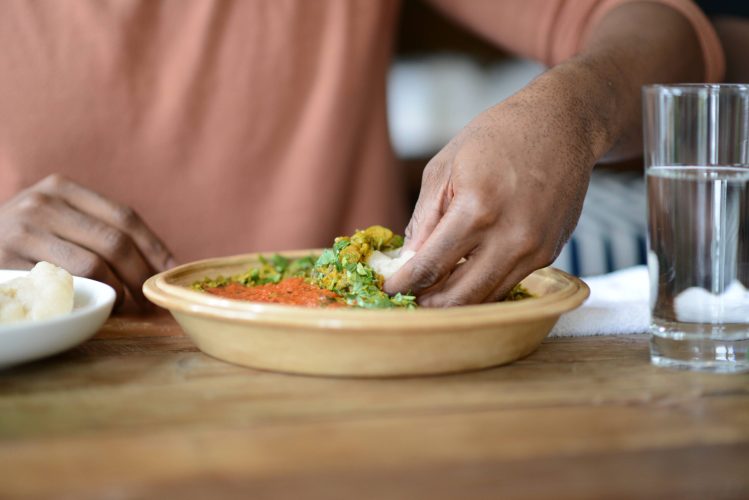When it comes to dining customs around the world, West Africa stands out with its unique and fascinating traditions. One prominent aspect of West African culinary culture is the practice of eating with hands. While it may appear unconventional to those unfamiliar with the region, this age-old tradition holds deep cultural significance and exemplifies the rich heritage of West Africans.
Let’s delve into the representation of West Africans using their hands to eat, shedding light on its historical roots, cultural significance, and the appreciation for communal dining.

Historical Roots:
The act of eating with hands in West Africa is deeply rooted in history and has been practiced for centuries. Back in the days, people relied on their hands as the primary means of consuming food. This tradition has been passed down through generations, preserving a connection to ancestral ways of life and honoring cultural heritage. By eating with their hands, West Africans forge a direct link to their past, embracing their identity and preserving a unique aspect of their cultural legacy.
Cultural and Social Significance:
Beyond its historical origins, the practice of eating with hands in West Africa holds great social and cultural significance. Eating isn’t just eating, it is a communal gathering, bringing family, friends, and even strangers together. The act of eating with hands fosters a sense of togetherness, as people share from a common plate or platter. It symbolizes unity, equality, and the spirit of sharing, transcending individual boundaries and reinforcing social cohesion and absolute love for the culture.
West Africans have long felt the heightened sensory experience whenever they eat with their hands. The tactile sensation of feeling the food, experiencing its textures, and engaging multiple senses creates a more intimate and pleasurable connection with the meal

Cultural Diversity:
It’s important to note that West Africa is a diverse region comprising numerous ethnic groups, each with its own unique customs and culinary practices. While eating with hands is a common thread that unites West Africans, there are variations in how it is practiced. In some communities, the right hand is exclusively used for eating, while in others, both hands are utilized. The diversity of hand-eating traditions within West Africa showcases the richness of cultural expression across the region.

Appreciating the Experience:
For those unfamiliar with the practice, eating with hands may initially seem unsanitary. However, it is essential to recognize that West Africans have developed various techniques and norms to ensure cleanliness and hygiene during meal time. Handwashing before and after eating is a fundamental dining etiquette, ensuring cleanliness.
Furthermore, embracing the experience of eating with hands allows individuals to immerse themselves in the cultural authenticity of West African cuisine. By trying this traditional method, one gains a deeper understanding of the people, their values, and their way of life. It provides an opportunity to break away from familiar dining customs and explore the richness of a different culinary tradition. It allows for a direct connection between the diner and the food, enhancing the appreciation for the flavors and aromas that characterize West African cuisine.
By embracing this practice, we not only honor the customs of the past but also develop a greater appreciation for the rich tapestry of culinary traditions found across the globe.




